Darjeeling Tea

Organic Darjeeling Tea finds its way from the tea estates in Darjeeling to your cup to give you the most enriching tea experience!
What is Darjeeling Tea?
In the world of tea, numerous regions grow and manufacture tea. Most of their names refer to the place where it's grown. Darjeeling Tea is one of such tea grown in the Himalayan belt of India, the beautiful hills of Darjeeling. Darjeeling Tea can be defined as one of the most exotic, expensive and exclusively flavored tea. Darjeeling tea is produced in West Bengal from a particular variety of the Camellia Sinensis plant known for making most black, green, white and oolong teas. With five distinct harvests per year, each season brings its own flavor profile and body.
Types of Darjeeling tea
Black Tea
Black tea accounts for over 90% of the tea consumption in the western world. During the production process of black tea the leaves are changed substantially, allowing the characteristic flavors of black tea – ranging from flowery to fruity, nutty and spicy – to emerge.
Craft House recommends:
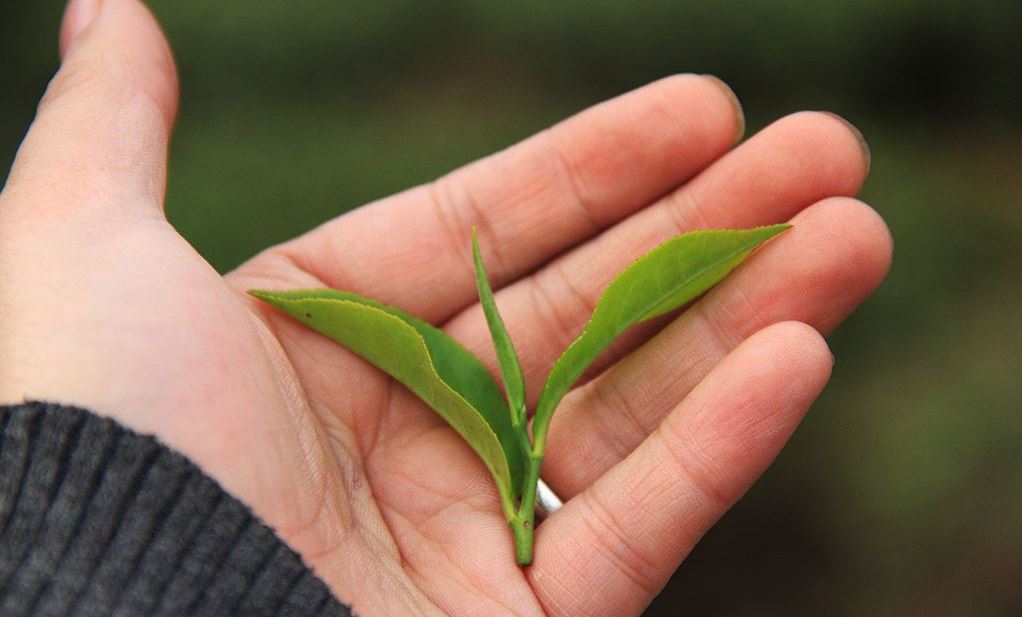
- Darjeeling - Muscatel Second Flush Tea
- Darjeeling - Silver Tips Imperial Tea
- Darjeeling Tea Set- Autumnal - Spring - Summer
- Darjeeling - Summer Tea
- Darjeeling - Vintage Tea
- Darjeeling - Black Tea
Oolong Tea
Also known as partially or semi-fermented tea, the oolongs have some of the qualities of both black and green tea. At their best, oolongs are beautiful, full-bodied tea with a fragrant flavor and fruity, sweet arom
Craft House recommends
Green Tea
Green tea, for centuries the beverage of choice in Asia, is rapidly gaining popularity in the western world. Its natural aroma and widely acclaimed health benefits make green tea appealing to both the tea lover and previously non-tea drinker. When preparing green tea, it is important to use water below the boiling point and to carefully watch the infusion time to avoid bitterness.
Craft House recommends
- Darjeeling - Green Tea – Caddy
- Darjeeling - Green Tea – Pouch
- Darjeeling - Lemongrass Tea
- Darjeeling - Basil Herbal Tea
- Darjeeling - Pearl Tea
- Darjeeling - Fennel Herbal Tea
White Tea
White tea is the most delicate of all tea; the finest varieties are appreciated by tea connoisseurs for their unmatched subtlety, complexity and natural sweetness. The production of the most delicate white tea consists of only two steps: Steaming and drying. The absence of withering, rolling and oxidation leaves the appearance of the leaves essentially unaltered.
Craft House recommends:
Blended, Flavored & Scented Tea
Craft House recommends
Flavored Tea: 
- Darjeeling - Lemongrass Tea
- Darjeeling - Muscatel Second Flush Tea
- Darjeeling - Fennel Herbal Tea
- Darjeeling - Basil Herbal Tea
- Darjeeling - Black Tea
- Darjeeling - Oolong Classic Tea
- Darjeeling - Green Tea – Caddy
- Darjeeling - Green Tea – Pouch
- Darjeeling - Pearl Tea
Seasonal Blends:
- Darjeeling - Silver Tips Imperial Tea
- Darjeeling Tea Set- Autumnal - Spring – Summer
- Darjeeling - Summer Tea
-
Darjeeling - Vintage
Tea
Benefits of Darjeeling Tea
1. Darjeeling is packed with Antioxidants such as catechins.
2. Fights bad breath and mouth bacteria.
3. Improves the health of your hair and scalp.
4. Darjeeling tea can help reduce the stress levels.
5. May aid in the promotion of weight Loss.
6. Darjeeling tea can help increase the bone mineral density.
The Making of Darjeeling Tea
The Four Harvests
|
FIRST FLUSH (late February to mid-April) The first harvest, called “first flush,” is performed in the middle of March. Darjeeling tea picked during this part of the year often has a lighter color and aroma than that of other harvests.
|
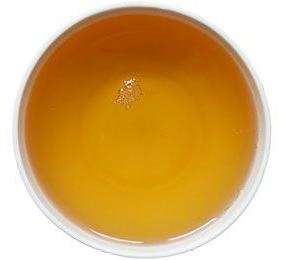 |
|
SECOND FLUSH (May to June) Some leaves are also picked in May between the first and second flush, although fewer crops are gathered for this harvest. During the second flush In June, the crop is bountiful, and the tea exhibits an especially deep color and a strong muscatel flavor. |
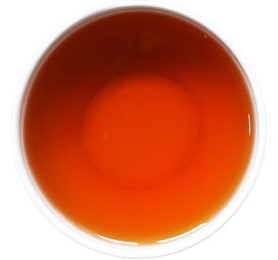 |
|
MOONSOON OR RAIN FLUSH (July to September) In August, the tea is once again collected amid heavy monsoons, hence the name “monsoon tea.” These leaves are generally less withered as those harvested at other times of the year, making it an ideal ingredient for spiced tea blends. |
|
|
AUTUMN FLUSH (October to November) In the fall, the final harvest, known as autumnal flush, takes place. This tea has a deeper color when steeped and, while less spicy than other harvests, is fuller-bodied.
|
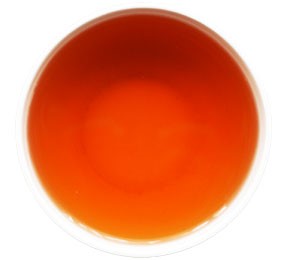 |
|
S.no |
Process Name |
How it done |
Related Images |
|
1 |
PLUCKING |
1. Tea leaves are plucked fresh very early in
the morning when there are the dew drops on the
leaves. 2. The leaves are hand-picked with utmost care. |
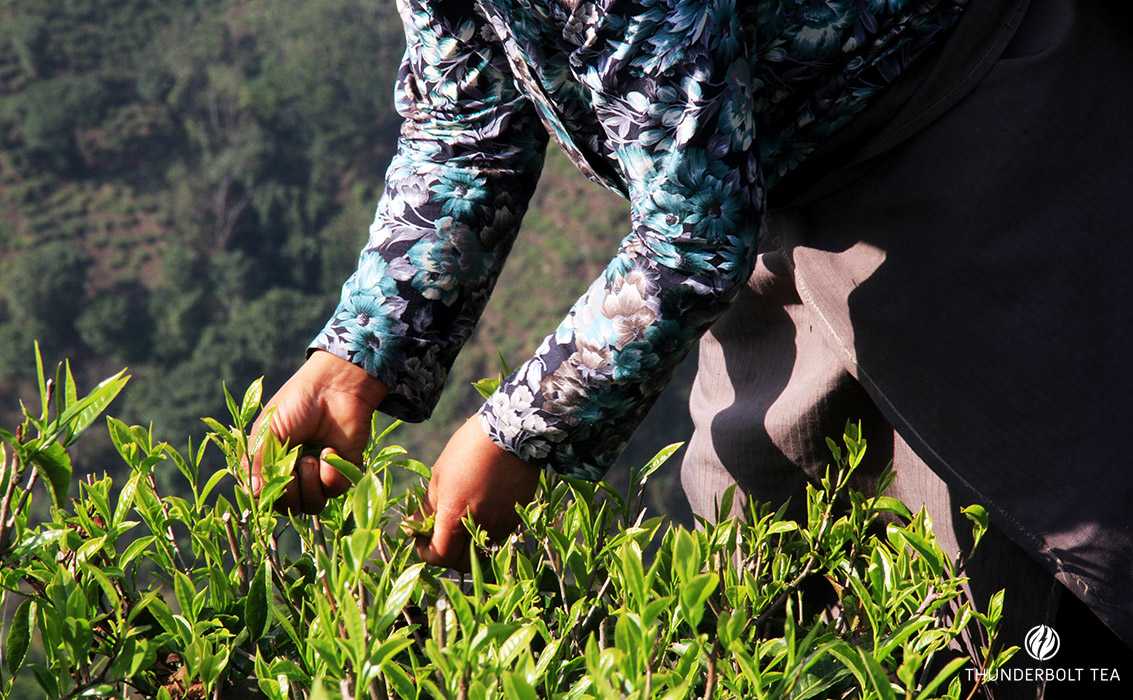 |
|
2 |
WITHERING |
1. Withering involves spreading tea leaves in
troughs with the sieved bottom, which lets in the
airflow that dries the leaves. |
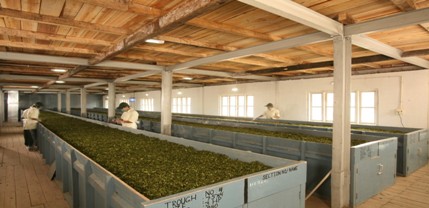 |
|
3 |
ROLLING |
1. Rolling is an hour-long process, in which
tea leaves are subjected to a roll, between two
horizontal discs moving in opposite direction. |
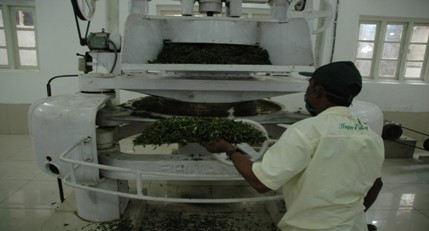 |
|
4 |
FERMENTATION |
1. Rolled blends are now placed on
fermentation racks for oxidation. |
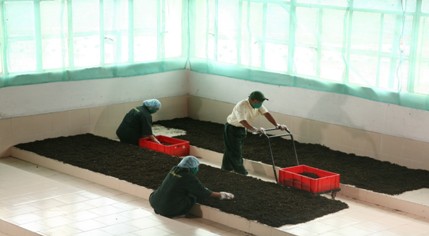 |
|
5 |
DRYING |
1. Once oxidized, tea leaves are put on a
dryer. |
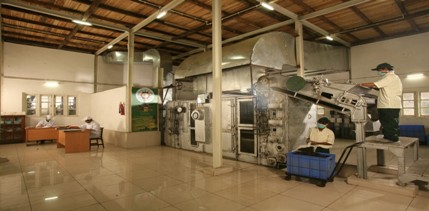 |
|
6 |
Sorting |
1. The tea is passed through several sieves
of progressively higher sizes to get the different
grades of tea, viz: Whole leaf, Broken, Fanning,
and Dust. |
|
Grades of Darjeeling Tea
When Darjeeling tea is packaged, they are done by the grade of tea, i.e. essentially by the size of the tea leaves (full leaf, broken etc). This to a large extent also indicates the quality of the tea and therefore the price. Here are the different grades of Darjeeling tea:
SFTGFOP: Super Fine Tippy Golden Flowery Orange Pekoe. These are whole leaf tea and of highest grade. They can have many tips. The liquors are usually light in color.
FTGBOP: Fine Tippy Golden Broken Orange Pekoe. Broken leaves but still of high quality.
GFOF: Golden Flowery Orange Fannings (fannings are smaller than the broken leaves) .
D: Dust. These are Darjeeling tea dust and lowest in price.

